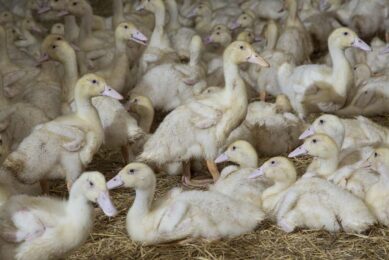Avian influenza still a threat, says WHO

The World Health Organization (WHO) warns that newly confirmed human and poultry cases of avian influenza this year are a reminder that the virus poses a real and continuous threat to human health.
So far this year, 21 human cases of H5N1, including 7 deaths, have been reported. Of those, 16 were in Egypt (including 5 deaths), 4 in Viet Nam (including 1 death), and 1 in Indonesia (who died). So far in 2010, Bangladesh, Bhutan, Cambodia, India, Israel, Myanmar, Nepal, and Viet Nam have all reported outbreaks of the disease in poultry or wild bird flocks, highlighting the fact that people often are falling sick and dying in the same areas that the virus is persistently present in the environment. H5N1 is considered endemic in Egypt and parts of South East Asia.
The presence of H5N1 in poultry poses a health risk in 2 ways. First, it places those in direct contact with birds – usually rural folk and farm workers – at risk of catching the often-fatal disease. Second, the virus could undergo a process of “reassortment” with another influenza virus and produce a completely new strain.
Gene reassortment can occur when a host – an animal – is infected with 2 or more viruses at the same time, and when the viruses combine to form an entirely new virus. Gene reassortment is also called antigenic shift.
“There is a constant risk that the H5N1 virus will combine with another strain of influenza,” said Dr Takeshi Kasai, Regional Adviser for Communicable Disease Surveillance and Response. “The influenza virus is unpredictable; in areas where H5N1 is endemic, WHO and its partners are working to build surveillance systems to identify changes in the behavior of the virus, raising awareness about the risks and protective measures, and building skills and capacity to respond to outbreaks quickly.”
People are at risk of contracting H5N1 when handling, transporting, slaughtering, or processing infected poultry, or by coming into contact with infected poultry faeces. People are also at risk if they eat raw or undercooked infected poultry or poultry products, including infected eggs.
People can protect themselves from being infected with H5N1 by avoiding contact with the source of infection (e.g., keeping poultry out of the house, burying dead birds) and maintaining good personal and food hygiene practices (washing hands, not buying or eating sick birds, slaughtering birds away from the kitchen and eating areas).
Worldwide, human cases peaked at 115 (and 79 deaths) in 2006 and have generally declined since then, with 73 human cases (and 32 deaths) reported in 2009. The case fatality rate for reported human cases of H5N1 is around 59%.
Source: World Health Organization (WHO)
Join 31,000+ subscribers
Subscribe to our newsletter to stay updated about all the need-to-know content in the poultry sector, three times a week. Beheer
Beheer








 WP Admin
WP Admin  Bewerk bericht
Bewerk bericht